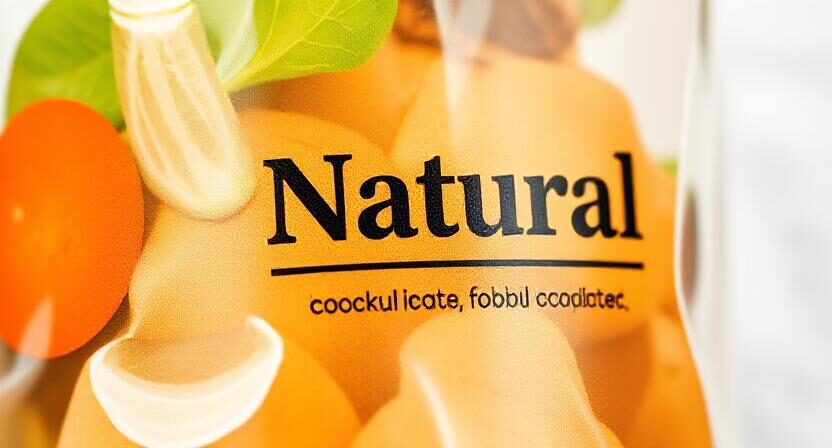Why Tart Cherry Is the…
Blog by Sherry Larson Why Tart Cherry Is the Natural…
Table of Contents
Toggle
Consumers are becoming more health-conscious, paying closer attention to ingredient lists and nutritional labels. To capitalize on this shift, food companies have found a clever marketing trick—slapping the word “natural” on their products. But what does “natural” really mean when it comes to processed food? Unfortunately, the term is often misleading, as there are no strict regulations defining its use on food packaging.
This article dives into how food companies manipulate labels, why the term “natural” is meaningless in most cases, and how consumers can avoid falling for these marketing traps.
The Problem With the “Natural” Label
The word “natural” evokes images of fresh, wholesome ingredients free from chemicals and artificial additives. However, in the world of processed food, “natural” is often just a marketing ploy with little to no regulatory oversight.
With no concrete regulations, food companies take full advantage of this loophole, misleading consumers into believing they are making healthier choices.
Common Processed Foods That Claim to Be “Natural”
Many processed foods carry the “natural” label despite containing questionable ingredients. Here are some common examples:
Just because a product is labeled “natural” doesn’t mean it’s free from processed ingredients, preservatives, or additives.
The Loophole of “Natural Flavors”
One of the most misleading aspects of “natural” labeling is the inclusion of “natural flavors.” Many consumers assume these flavors are derived directly from fresh, organic ingredients, but the truth is much more complicated.
Food companies use “natural flavors” as a loophole to avoid listing the dozens of chemicals that make up processed flavors. In reality, these ingredients are far from truly natural.
Hidden Additives in “Natural” Products
Even when a product claims to be natural, it often contains hidden additives that can be harmful to health. Here are some of the most common ones:
These additives are commonly found in so-called “natural” foods, making it important to read beyond the front-label marketing claims.
How to Avoid Falling for “Natural” Labeling Tricks
To truly eat healthier and avoid misleading marketing claims, follow these guidelines:
The Bigger Issue: Transparency in the Food Industry
The misuse of “natural” on food labels highlights a bigger issue—lack of transparency in the food industry. Many companies rely on deceptive marketing tactics to sell products that aren’t as healthy as they seem. Without stricter regulations, it’s up to consumers to stay informed and skeptical.
Final Thoughts
Just because a processed food is labeled “natural” doesn’t mean it’s healthy. The lack of regulation around this term allows companies to mislead consumers into thinking they’re making a better choice, when in reality, many “natural” products still contain additives, preservatives, and artificial ingredients.
By being an informed shopper, reading ingredient lists, and prioritizing whole, unprocessed foods, you can avoid the deceptive marketing tactics used by the food industry. Real health starts with real food—not empty label claims designed to trick consumers.
Blog by Sherry Larson Berberine: Nature’s Secret Weapon for Blood Sugar, Inflammation & More If you’re looking for…
Blog by Sherry Larson Shilajit: Nature’s Ancient Energy Tonic for Modern Burnout We’ve all felt it—that sluggish, wired-but-tired…
Blog by Sherry Larson Celery Juice: The Gut-Healing, Liver-Loving Morning Ritual You Didn’t Know You Needed If you’ve ever felt…
Blog by Sherry Larson Milk Thistle: The Detox Defender Your Liver Has Been Waiting For Milk thistle might…
Blog by Sherry Larson The Link Between Ultra-Processed Foods and Cancer: What They’re Not Telling You Every day,…
Blog by Sherry Larson Understanding High Cortisol: Signs, Causes, and Natural Ways to Balance It Cortisol, commonly known…
Blog by Sherry Larson The Truth About Red Meat and Health: Why the Real Culprit May Not Be What You…
Blog by Sherry Larson The Hidden Dangers of Diet Cola: What You Need to Know Diet cola has…
Blog by Sherry Larson 14 Ways to Begin Healing Your Gut and Transform Your Health …
copyright © 2025 Anti-Inflammatory Approach. All rights reserved. Unauthorized reproduction, distribution, or use of any content, including text, images, recipes, or other materials on this website, is strictly prohibited without prior written permission. This website’s content is provided for informational purposes only and does not constitute medical or professional advice.